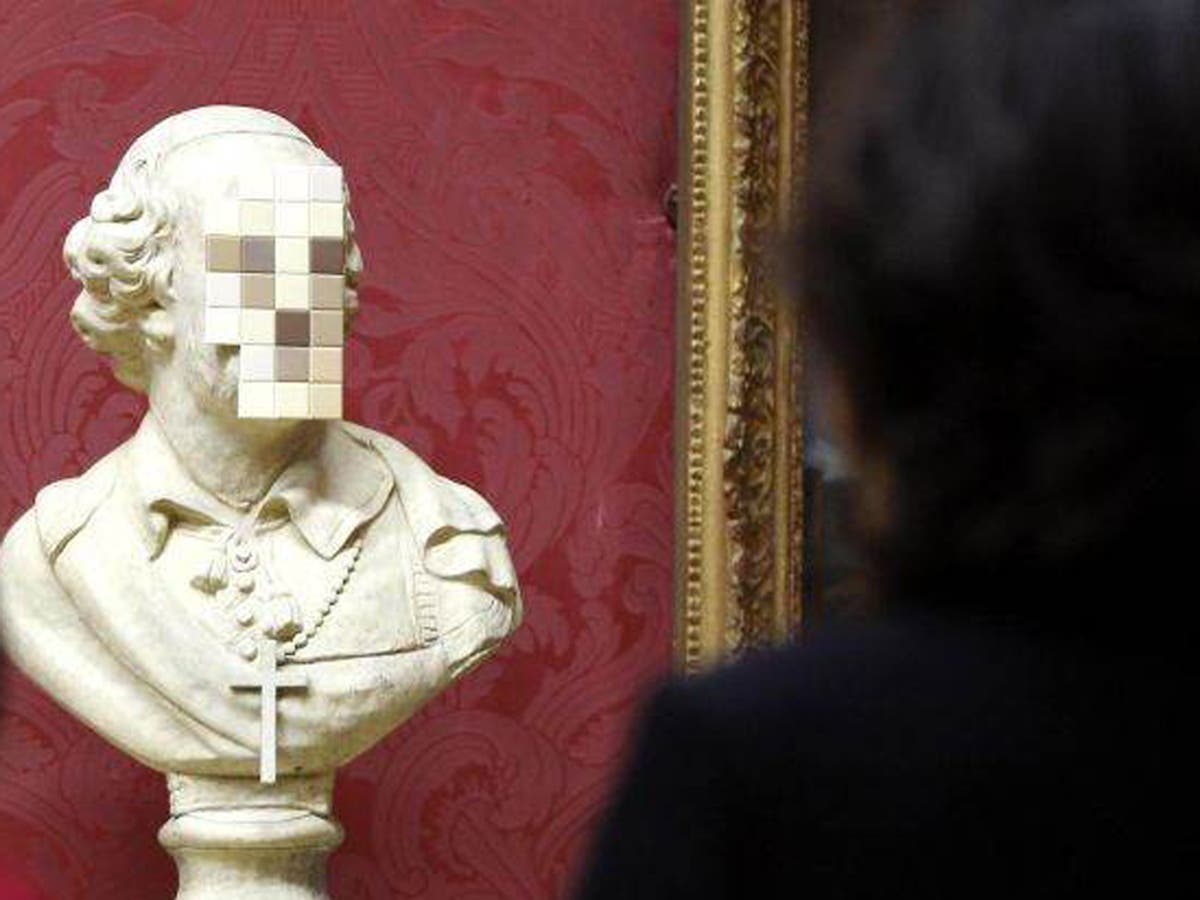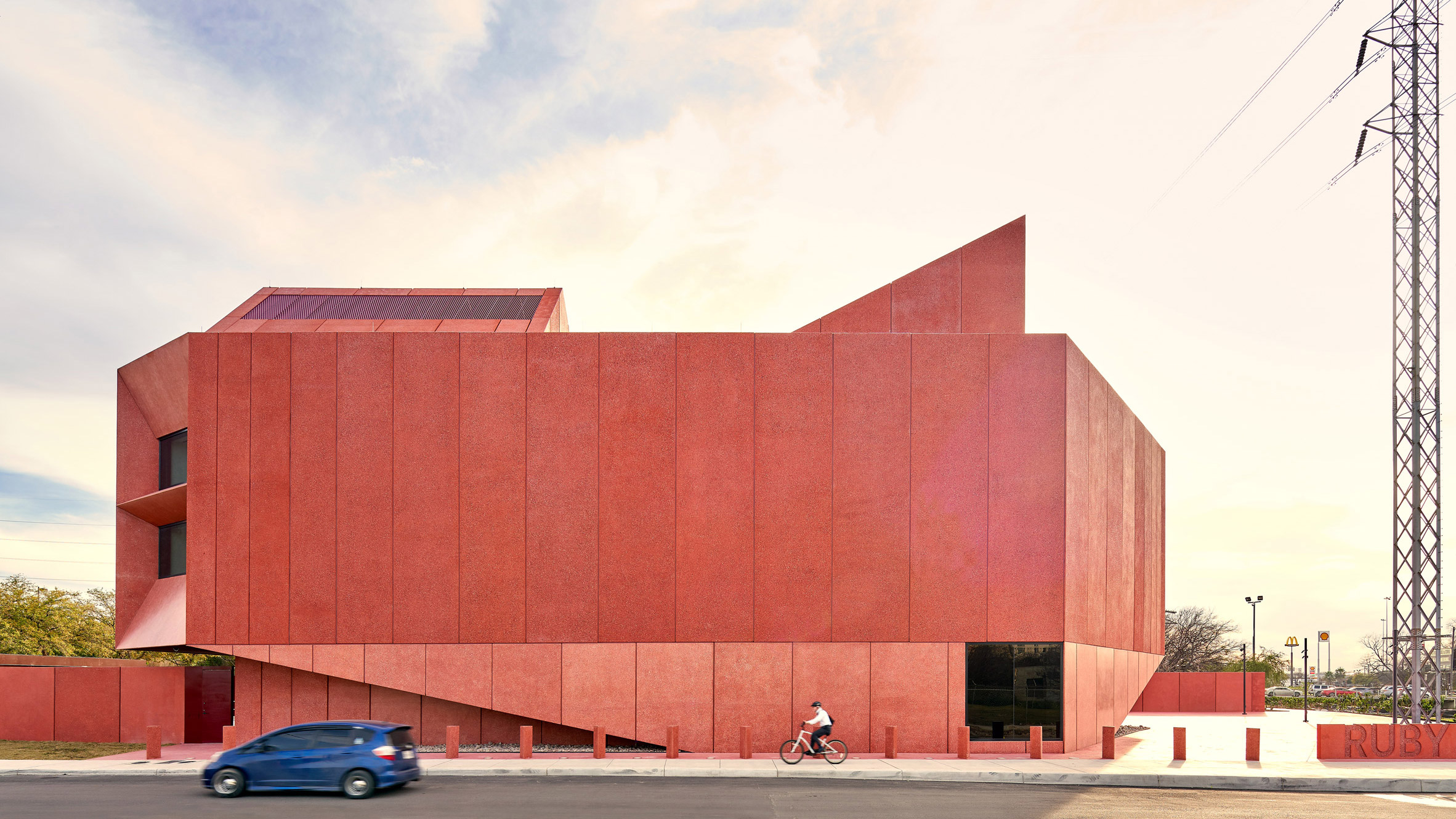Untitled (from the Hill of Poisonous Tree Series)
2008 - Photography (Photography)
Dinh Q. Lê
Hill of Poisonous Trees (three men) (2008) exemplifies the artist’s signature photo-weaving technique, in which he collects diverse found photographs—portraits of anonymous people, stills from blockbuster films, or journalistic images—cuts them into strips, and weaves them into new composition. The title of the series is translated from the Khmer phrase Tuol Sleng , which literally means a poisonous hill or a place on a mound to keep those who bear or supply guilt, and the photographs came from the Tuol Sleng Genocide Museum in Cambodia, a former prison where at least 200,000 Cambodians were executed during the reign of the Khmer Rouge between 1975 and 1979. In this particular image, three men stand against the backdrop of what looks like a prison interior. Their identities are unknown. The ghostly, illuminated space creates a strange effect of time traveling, transporting viewers back to the historical event depicted. The men’s gazes seem to tell stories that have been buried in collective memory. For Lê, the act of appropriating, recycling, and remixing imagery is a means of rescuing both images and the memories embedded within them.
Dinh Q. Lê’s artistic practice centers on his lived experience of political and social conditions in his native Vietnam; he and his family fled the country via Thailand in 1979 and immigrated to the United States. Lê interweaves the experiences that helped shape his identity with Vietnamese national mythologies, collective memories, and expanded cultural histories. Incorporating imagery from a variety of sources, such as archival photographs, documentaries, Hollywood films, and Vietnamese iconography, Lê’s investigations raise critical questions about the distribution, reception, and consumption of images, and how images inform national identity.
Colors:
Related works of genres: » school of visual arts alumni
» see more

© » KADIST
Christine Sun Kim
2022Hand Palm Echo 1 is a digital animation based on Christine Sun Kim’s staircase mural at The Drawing Center in New York (10 March – 22 May, 2022)...

© » KADIST
Alex Da Corte
2017Slow Graffiti was produced for Da Corte’s exhibition at the Vienna Secession in 2017...

© » KADIST
Julieta Aranda
2016The video Swimming in rivers of Glue is composed of various images of nature, exploring the themes of exploration of space and its colonization...
Related works featuring themes of: » Appropriation Art, » Collective History, » Contemporary Pop, » Film/Video, » Vietnamese
» see more

© » KADIST
Hamra Abbas
2010At first glance, Cityscapes (2010) seems to be a collection of panoramic photographs of the city of Istanbul—the kind that are found on postcards in souvenir shops...

© » KADIST
Mario Garcia Torres
2005Mario Garcia Torres films a game of Charades among professional actors guessing the former North Korean dictator’s favorite Hollywood films...

© » KADIST
Luke Butler
2008In Captain X , Star Trek’s Captain Kirk, played by William Shatner, is limply draped over a large boulder in what looks like a hostile alien environment...
Other related works, blended automatically
» see more

© » KADIST
Hamra Abbas
2010At first glance, Cityscapes (2010) seems to be a collection of panoramic photographs of the city of Istanbul—the kind that are found on postcards in souvenir shops...

© » KADIST
Yin-Ju Chen
2011This work includes sketches for Extrastellar Evaluations , the project she produced at Kadist...
Related works sharing similar palette
» see more
Related works from the » 2000's created around » Los Angeles
» see more

© » KADIST
Jedediah Caesar
2009For Untitled, Caesar encased recycled objects such as scraps of plywood, paper or cloth in resin and then cut and reassembled the pieces into abstract forms...

© » KADIST
Paul McCarthy
2008Memory Mistake of the Eldridge Cleaver Pants was created for the show Paul McCarthy’s Low Life Slow Life Part 1 , held at California College of the Arts’s Wattis Institute in 2008 and curated by McCarthy himself...

© » KADIST
Koki Tanaka
2009Walking Through is one of a series of videos—sometimes humorous, often absurd—that record the artist’s performative interactions with objects in a particular site...

© » KADIST
Edgar Arceneaux
2006Untitled (Wheelchair Drawing) is a ten-foot photo transfer of the image of a wheelchair with burning embers in its seat...
Related artist(s) to: Dinh Q. Lê » Ho Tzu Nyen, » Lena Bui, » Tiffany Chung
» see more

© » KADIST
Ho Tzu Nyen
2011The Cloud of Unknowing (2011) is titled after a 14th-century medieval treatise on faith, in which “the cloud of unknowing” that stands between the aspirant and God can only be evoked by the senses, rather than the rational mind...
Related works found in the same semantic group
» see more

© » KADIST
Olaf Breuning
2002For this image, Olaf Breuning invented a revised stone age corrected for the cinema in which dolmens and leather were replaced by surf boards and neoprene clothing...

© » KADIST
Mohamed Bourouissa
2008Temps Mort is the result of one year of mobile phone exchanges of still images and videos between the artist and a person incarcerated in prison...

© » KADIST
Wong Wai Yin
2021Drawn from the widely circulated images of protests around the world in support of women rights and racial equality, the phrase I can’t believe we are still protesting is both the title of Wong Wai Yin’s photographic series and a reference to similar messages seen on protest signages...

© » KADIST
Wong Wai Yin
2021Drawn from the widely circulated images of protests around the world in support of women rights and racial equality, the phrase I can’t believe we are still protesting is both the title of Wong Wai Yin’s photographic series and a reference to similar messages seen on protest signages...








